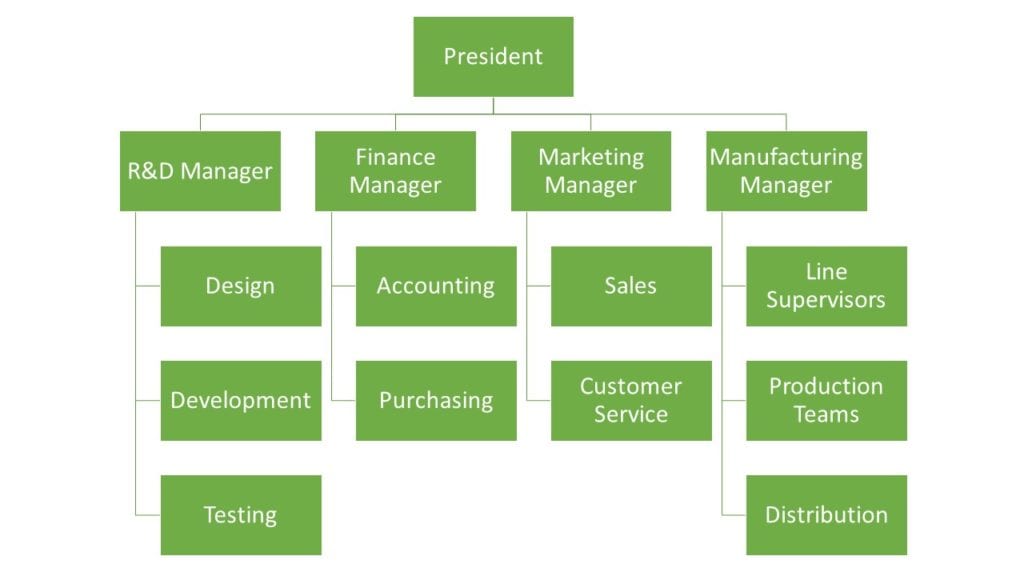Every organization exists in a variety of shapes and sizes and hence, their operating requirements will be unique. Depending on how each of them needs to operate, the responsibility of specialized duties is held by different departments or employees. All of them together are accountable for the success or failure of an organization’s goals.
In order to operate in the most efficient way and to grow, an organization needs to adopt an operating structure. This structure helps it to define different departments, identifies who should be held accountable for deliverables, and guides the decision hierarchy.
Hence, commonly known as the organizational structure.
The kind of structure an organization adopts determines how dynamic, fluid, or static the role of its employees would be. The kind of career growth the employees may expect to see. And the style of work that they would need to adapt to.
All of this is dependent on the kind of organizational structure a company implements. One of the most common structures that organizations adopt is the functional organizational structure. You can click here and cut to the chase if you already know the premise: What is a functional organizational structure?
An organizational structure is one of the most important foundational elements of any company, and it is imperative that the management invests enough time and effort to set their organization up for success.
Different Types of Organizational Structure
There are basically four different types of organizational structure. These structures are further amalgamated and often divided into a variety of subtypes to address the unique needs of each company.
- Functional Organizational Structure: Employees are divided based on their specialties. There is limited interaction between each department. All departments are responsible for their own operations, KPIs and management of resources.
- Divisional Structure: The divisional organizational structure is divided either according to individual projects or different product categories. This enables a number of brands business units to operate under a single parent company. CPG (or FMCG) companies such as Unilever and P&G operate with several different business units.
- Matrix Structure: The decision hierarchy is fluid in a Matrix structure. It is known to be flexible, nimble, fast, and may lead to multiple reporting lines. An employee in a Matrix structure may be responsible for reporting to his line manager but also reports into a Managing Director for specific clients. Most advertising and media agencies adopt the Matrix structure for maximum utilization of human resources. Even high tech companies like Google also maximize their talent resources with a similar structure.
- Flat-archy Structure: A rather unconventional term? Isn’t it? The flat-archy combines the innovative culture and a freedom of a flat structure with the benefits of a hierarchical organization. This structure is most commonly found in smaller high growth companies, usually startups or ambitious small businesses. It has open communication between the senior employees and the junior staff. This often allows for a better and healthier relationship and exchange of ideas between the management and their employees. Companies usually refer to this type of employee-management bond as nurturing a closely knit family culture.
What is a Functional Organizational Structure?
The basis of organizational structure for any company is to understand the lines of reporting and specify lines of communication for efficiency, to ensure smooth operations, and to drive growth. As mentioned above, a functional organization is one of the most common types of organizational structure.
In a functional organizational structure, the organization is set up split into departments specializing in a specific area of expertise.
Have you heard of companies with departments such as IT, Finance, Marketing, Human Resource, Production, and Procurement? If you have, then most likely, you have witnessed a company with a functional organizational structure.
Each department has its own guidelines, standard operating procedures (SOPs), targets and requirements.
They hire employees based on specific skills and qualifications relevant to roles and hierarchical layout within that department.
Every department is led by a leader (could be a manager, senior manager, director, etc. depending on the size of the company). So, depending on how it functions, there may be other sub-hierarchical structures developed within them.
It’s like a piece of a bigger puzzle (the bigger puzzle being the organization itself).

Pros and Cons of Functional Organizational Structure
There are several advantages and disadvantages
But it really comes down to what your organization needs.
Not to forget, the stage of growth it is at, and how you would want the authority to work.
We have listed some of them below:
Advantages of Functional Organizational Structure
- The employees are made into groups according to their skills, and thus the overall effectiveness and efficiency of the tasks increase.
- There is easy accountability for each employee and thus employees get their reward through a fair and just practice.
- The hierarchy is out in the open, there is no surpassing of authority as employees report according to their line of communication.
- The job roles distribution is according to a different field of study and therefore there is no replication of responsibilities or duplication of efforts from the employees.
- Every employee performs according to their job role. This creates a sense of job security which allows employees to work in a more productive way.
- Communication is two way within each department which allows for a friendly environment within each department.
Disadvantages of a Functional Organizational Structure
- In the long term, employees tend to feel bored and the monotony of the job can be off-putting. This decreases the overall efficiency of the employee.
- The inter-department communication is very poor this creates an overall lack of growth as an organization.
- The functional structure is bureaucratic in nature and this leads to rigidity and inflexibility to changes. This may overall demoralize the organization.
- The growth of an employee has a limitation. After acquiring skills and specialization in their field of work, there comes a certain point when there is no possibility of further job improvement. It is then the employee becomes expensive for the organization and they usually leave.
Strengths and Weaknesses of a Functional Organizational Structure
The functional organizational structure has its own strengths and weaknesses that it provides the organization with. When an organization is able to analyze the strengths and weaknesses of the various structures they can utilize it for improving their company. This analysis allows them to use it to their advantage and make it profitable. In case of weaknesses, these weaknesses can be taken control of to ensure that their effects are mitigated and counter-effective techniques made so as to minimize the negative impact.
Strengths of Functional Organizations
- Employees usually have specialization and this gives the company an edge over other companies. Using the specialized skills the companies can create their own USP and rule their particular industry.
- The functional structure allows productivity enhancement as each department is responsible for their own results and this allows better and superior performance.
Weaknesses of Functional Organizations
- Employees feel that they do not have the perfect grounds for growth and career switch is the only option for further growth. In this case, the company loses talent at higher levels, as people move on to better opportunities.
- The decision-making process is very slow as the organization tends to have departments. It takes time for the decisions to reach higher levels of management. The delay in the process can be quite painstaking considering the current the trends in the business world.






